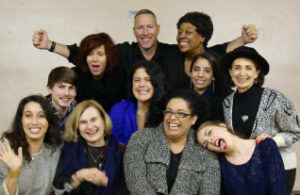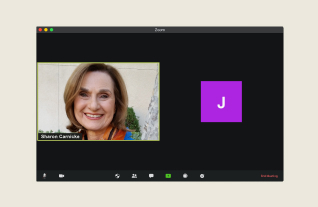Dynamic Acting through Active Analysis
The mistery...
The story of Active Analysis is like a spy novel. The hero—an innovative artist—is shut off from the world by order of a dictator, whose minions insure that only the artist’s most politically expedient work will reach the public.
When Stalin took control of the Soviet Union, Stanislavsky was already world-famous for his acting System, but his newest, most experimental take on acting was in opposition to Stalin’s goals. So, Stanislavsky was confined to his home for the last four years of his life, never again setting foot in the theatre which had been his artistic home for three decades. The newspapers told the world that he was too old and ill to go out, but the truth was much more complicated. During this confinement, he worked in secret at his home with a select circle of actors on what would eventually be called Active Analysis. His nurses, doctors, and even some of his actors spied upon his every move. Only those ideas which could be spun in support of Stalinist policy were made public. Thus, Active Analysis was created in secret, hemmed in by censorship, distorted by propaganda, and remained virtually unknown until the 1960s when Stalin’s tyranny was publically exposed.
Another hero of Active Analysis was Maria Knebel, an actress and director who had served as one of Stanislavsky’s assistants. After his death, she kept his last experiments alive. For two decades, she taught Active Analysis in secret only to trusted colleagues and students. In the 1960s, when she could finally speak the truth, she wrote six books about Stanislavsky and made Active Analysis the cornerstone of Russia’s most influential directing program at the State Institute of Theatrical Arts (GITIS).
While Active Analysis has become Russia’s gold-standard for acting and directing, it remains little known in the United States, in part due to the predominance of the American Method (founded on Stanislavsky’s earlier work) and in part due to the paucity of materials in English. Sharon Marie Carnicke learned Active Analysis from Knebel, her assistants in Moscow, and transcripts of Stanislavsky’s last rehearsals. Carnicke was also the first to publish about Knebel in English and now teaches this lost legacy.
THE METHOD...
Active Analysis turns the usual way that actors rehearse inside out. Instead of first memorizing lines, actors explore the interactive dynamics of a story by means of improvisations, called etudes. As actors test the actions and counteractions that tell the story, they come to need their lines. In short, Active Analysis paradoxically steps away from a text in order to learn it. It is analysis because actors analyze the play by exploring its interactive options through their etudes. It is active because, from the first rehearsal to the last performance, actors are on their feet, actively engaging with each other and with the text. Active Analysis is also holistic because the etudes help actors activate all aspects of themselves simultaneously—mind, body, and spirit. Thus, Active Analysis produces dynamic performances and actors who are flexible, spontaneous, and imaginative.
What Actors Say
Active Analysis keeps the material fresh, because even a slight change in the action raises new ideas.
Lisa Dring, actor
Sharon’s ability to guide us through the process of Active Analysis is incredible. The depth of my characters and my ability to work dynamically has improved drastically.
Grigor Panosyan, improv performer
I have practiced Active Analysis with Sharon for years now and it never ceases to amaze me how well this technique cultivates authentic, specific, and intelligent acting through text analysis and improvisation. A must-have for actors to keep in their tool box.
Rose Leisner, actor
A/A gives me flexibility within structure.
Kylie Sparks, actor
Active Analysis uncovers opportunities within a script or a scene that are richer than mere improv.
Geo Sargent, actor and event manager
“In our current moment Active Analysis will prove to be a boon for rising theatre artists.”
Anne Bogart, Founder and Co-Artistic Director of SITI Company
“Carnicke presents Active Analysis as a useable approach for any actor or director. A true gift!
Milton Justice, podcast I don’t Need an Acting Class
“Active Analysis is quite possibly the most genius, thought-provoking, and exhilarating way to rehearse!”
Morgan Hill-Edgar, Actor
“Actors get on their feet on the first day of rehearsal in a collaborative process of drafting, distilling, and creating.”



